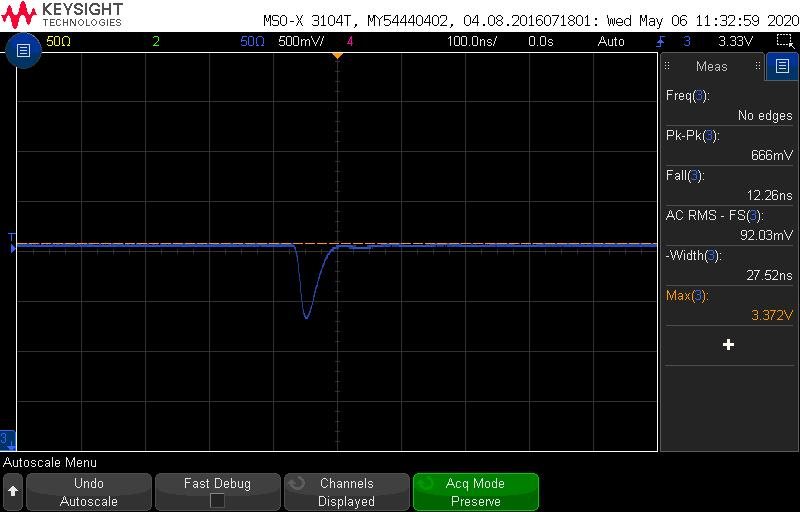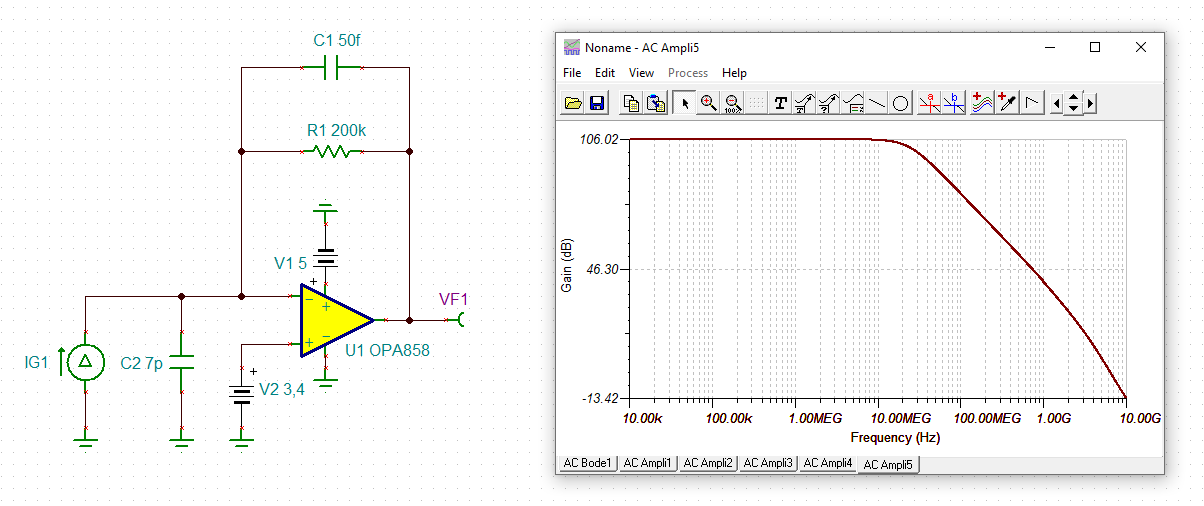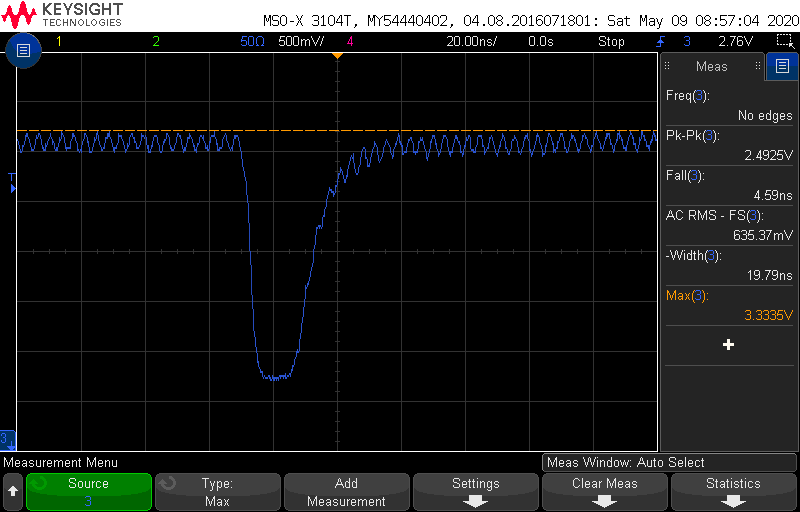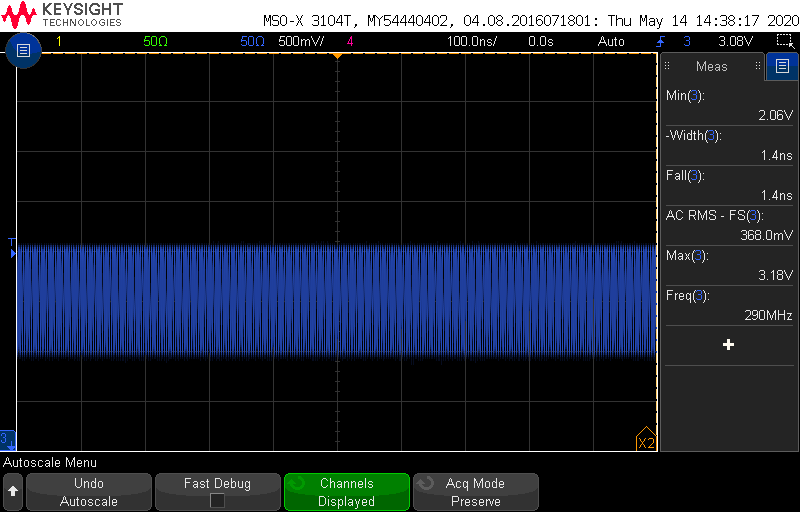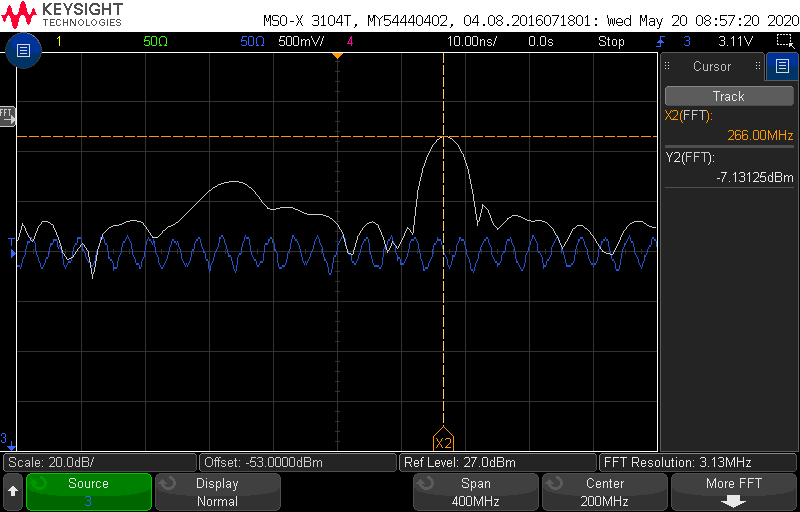Other Parts Discussed in Thread: TINA-TI, OPA855
Hi,
For a project I am working on I need to have a combination of high speed and high gain amplification for a TIA. I have 1-2 nanosecond laser pulses and a photo diode to capture the response. While the pulses are short the pulse frequency is only 200khz. The photodiode I am using is the SAR3000 from Laser components. with 7pF capacitance. I am currently using a OPA858 amplifier in a TIA configuration. I am essentially using this circuit below that was from the OPA858 datasheet.
My feed back resistor has been anywhere between 1k and >100k. I have been using the closest capacitor that I can find to go with the resistor based of the 0508 TIA Calculator from TIA.
When I try to get high feedback resistor values from the TIA to detect some of the low power current pulses I am not getting the gain that I would expect. I tried the same power level and setup with only a different resistors and got the same peak feedback.
10k feedback resistor
200k feedback resitor
I understand that as I increase my feedback resistor there will be a reduction in bandwidth but I still should have seen a gain in my peak voltage. Any idea why I am seeing this behavior?
Thanks,
Jared



